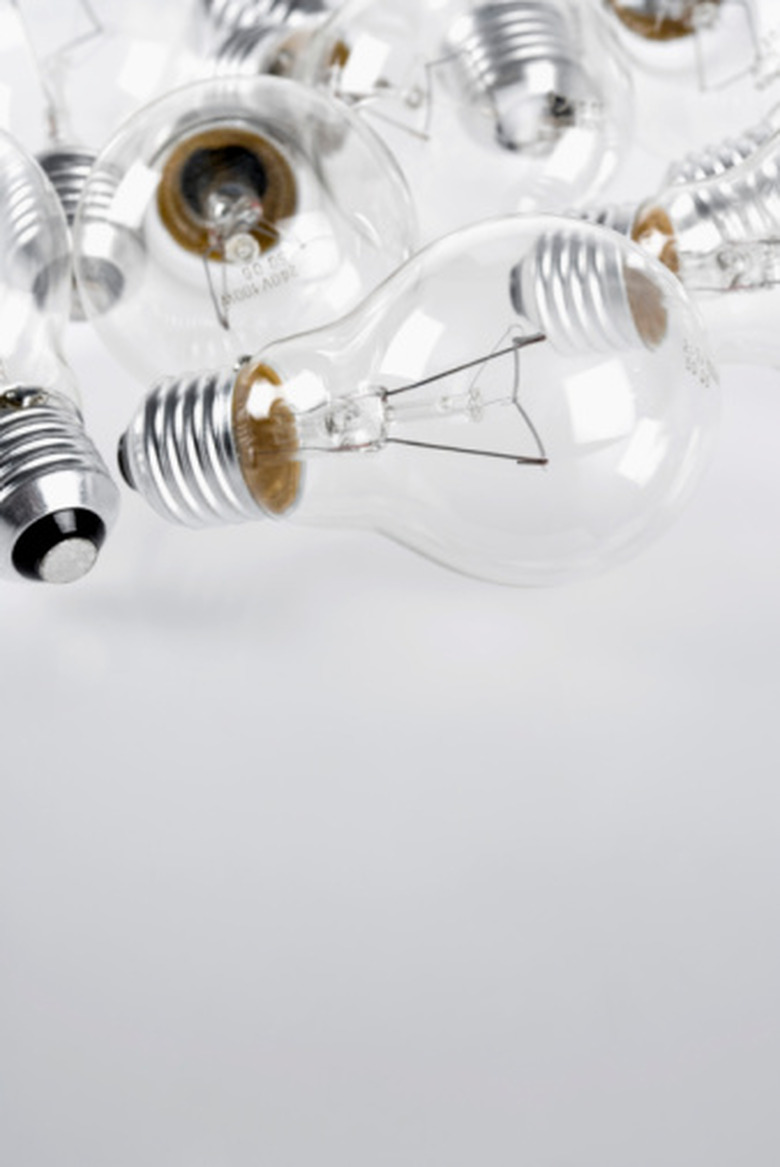Regular Light Bulb Vs. Floodlight Bulb
With the constant advancements in technology, one of the most unusual patterns is the dominance a technology can have that becomes widespread first. Like the QWERTY keyboard and fossil fuels, the incandescent bulb has been around for more than 100 years, leading to its dominance. Today, new technologies – such as floodlighting – exist but remain struggling competitors when compared to the success of incandescent bulbs.
Uses
Uses
Incandescent light bulbs are cousins, not competitors, to flood lamps – also known as high-intensity discharge or HID lighting – because their uses are so different. The incandescent bulb was once used everywhere, but today, it's only used within small and confined areas such as homes, desks and lamp lighting. HID lighting is extremely powerful and shines over great distances, enabling it to become prevalent as outdoor lighting. It's often used in street lamps or stadium lighting as well.
Structure
Structure
The basic operation – or means by which they produce light – also differs with regard to one another. Regular lighting is relatively simple and creates light by sending electricity into the bulb, creating a glow in a tungsten filament. HID lighting creates light by charging electrons in gases within an arc tube. The arc tube exists within a sealed vacuum.
Lifespan
Lifespan
As for lifespan, there remains no contest between the two types of lighting. Floodlights easily outperform incandescent bulbs. The original 19th-century incandescent bulb created by Thomas Edison lasted up to 1,000 hours. Today's bulbs haven't gotten much better, only improving to 2,000 hours for the best ones. Floodlights can last up to 24,000 hours, depending upon the gas by which it operates.
Efficiency
Efficiency
HID lamp technology is one of the most efficient lighting types in the world. When placed head-to-head with an incandescent bulb, it operates with close to 90 percent more efficiency, says the U.S. Department of Energy. Although the light shines brighter in an HID lamp, the Color Rendition Index – or comparison for how lighting compares to natural sunlight – is low compared to that of incandescent bulbs.
